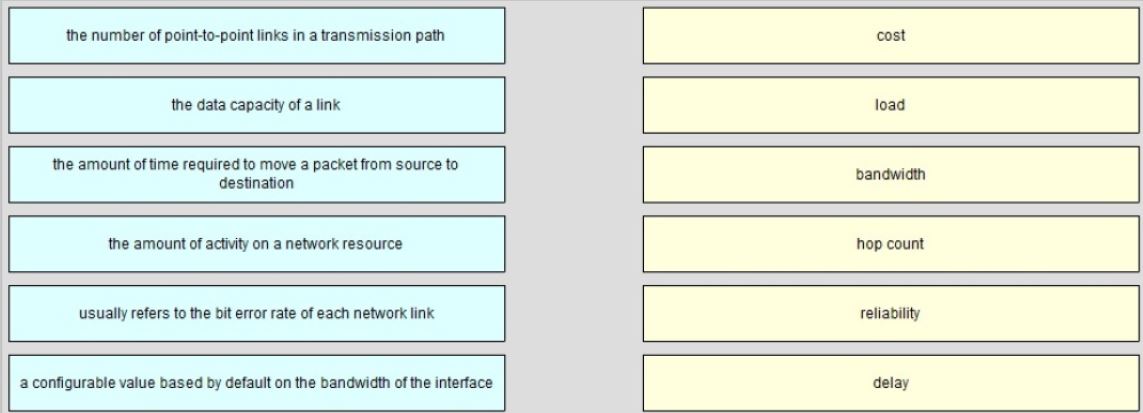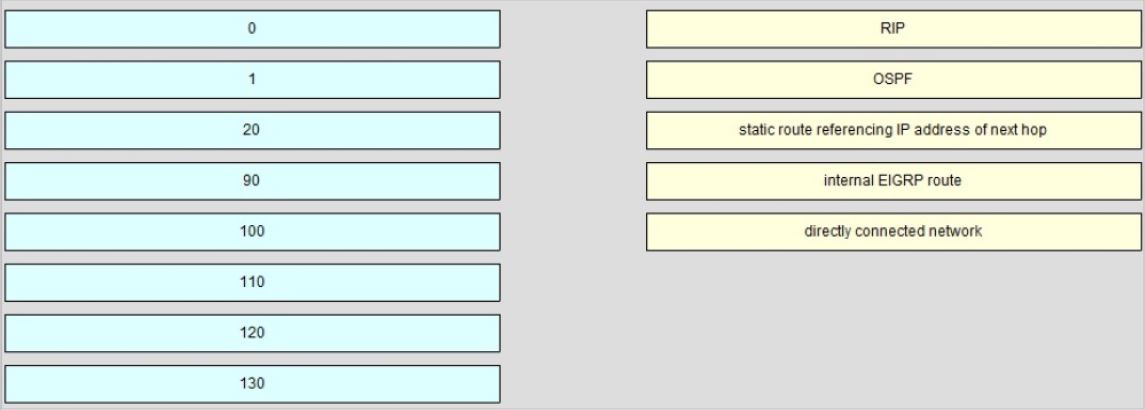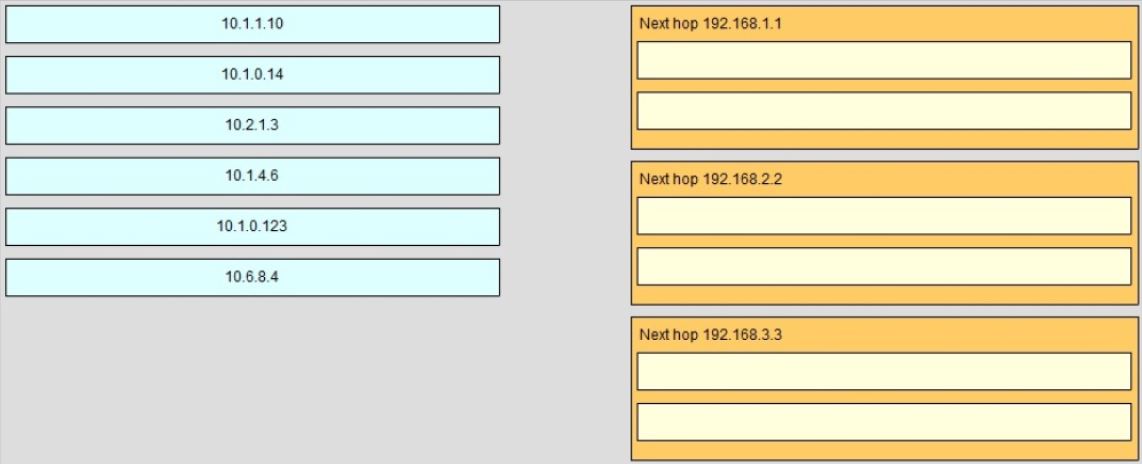Which command can you use to manually assign a static IPv6 address to a router interface?
A. ipv6 autoconfig 2001:db8:2222:7272::72/64
B. ipv6 address 2001:db8:2222:7272::72/64
C. ipv6 address PREFIX_1 ::1/64
D. ipv6 autoconfig
Which command can you use to manually assign a static IPv6 address to a router interface?
A. ipv6 autoconfig 2001:db8:2222:7272::72/64
B. ipv6 address 2001:db8:2222:7272::72/64
C. ipv6 address PREFIX_1 ::1/64
D. ipv6 autoconfig
Which of these represents an IPv6 link-local address?
A. FE80::380e:611a:e14f:3d69
B. FE81::280f:512b:e14f:3d69
C. FEFE:0345:5f1b::e14d:3d69
D. FE08::280e:611:a:f14f:3d69
The network administrator is asked to configure 113 point-to-point links. Which IP addressing scheme defines the address range and subnet mask that meet the requirement and waste the fewest subnet and host addresses?
A. 10.10.0.0/16 subnetted with mask 255.255.255.252
B. 10.10.0.0/18 subnetted with mask 255.255.255.252
C. 10.10.1.0/24 subnetted with mask 255.255.255.252
D. 10.10.0.0/23 subnetted with mask 255.255.255.252
E. 10.10.1.0/25 subnetted with mask 255.255.255.252
Drag each definition on the left to the matching term on the right.
Select and Place:

Drag the Cisco default administrative distance to the appropriate routing protocol or route. (Not all options are used.) Select and Place:

Routing has been configured on the local router with these commands:
Local(config)# ip route 0.0.0.0 0.0.0.0 192.168.1.1
Local(config)# ip route 10.1.0.0 255.255.255.0 192.168.2.2
Local(config)# ip route 10.1.0.0 255.255.0.0 192.168.3.3
Drag each destination IP address on the left to its correct next hop address on the right.
Select and Place:

Which parameter or parameters are used to calculate OSPF cost in Cisco routers?
A. Bandwidth
B. Bandwidth and Delay
C. Bandwidth, Delay, and MTU
D. Bandwidth, MTU, Reliability, Delay, and Load
Why do large OSPF networks use a hierarchical design? (Choose three.)
A. to decrease latency by increasing bandwidth
B. to reduce routing overhead
C. to speed up convergence
D. to confine network instability to single areas of the network
E. to reduce the complexity of router configuration
F. to lower costs by replacing routers with distribution layer switches
Which command encrypts all plaintext passwords?
A. Router# service password-encryption
B. Router(config)# password-encryption
C. Router(config)# service password-encryption
D. Router# password-encryption
Which two are advantages of static routing when compared to dynamic routing? (Choose two.)
A. Configuration complexity decreases as network size increases.
B. Security increases because only the network administrator may change the routing table.
C. Route summarization is computed automatically by the router.
D. Routing tables adapt automatically to topology changes.
E. An efficient algorithm is used to build routing tables, using automatic updates.
F. Routing updates are automatically sent to neighbors.
G. Routing traffic load is reduced when used in stub network links.